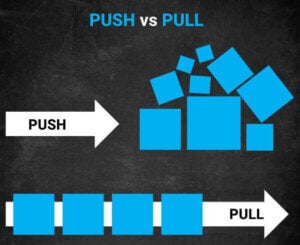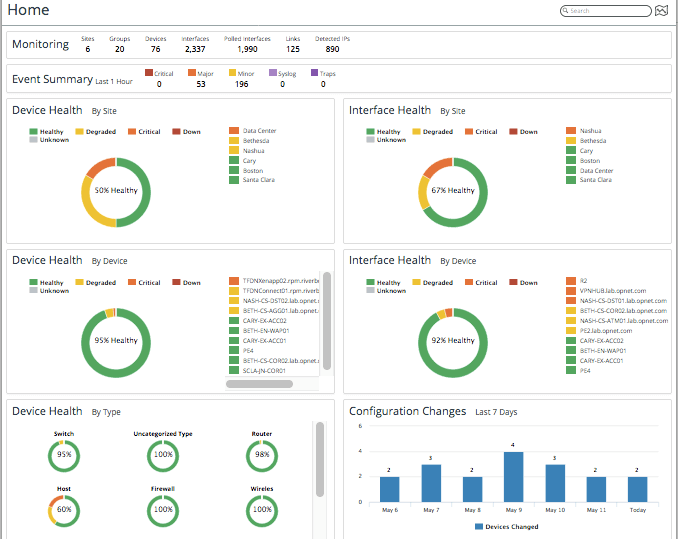Traditionally, network monitoring involved polling devices for their status and statistics. Now with streaming telemetry, devices proactively send data in real-time, providing a continuous stream of metrics.
Streaming telemetry enables network administrators to gather a wide range of data, including performance metrics, operational statistics, health information, and other relevant details from network devices such as routers, switches, firewalls, and servers. This data is typically transmitted using network protocols like gRPC (Google Remote Procedure Call), NETCONF (Network Configuration Protocol), or other lightweight protocols.
Overall, streaming telemetry transforms network management by providing continuous, real-time data streams that facilitate proactive troubleshooting, optimization, and decision-making in large, complex network environments.
Streaming telemetry vs SNMP?
Streaming telemetry and Simple Network Management Protocol (SNMP) are two different approaches to network monitoring and data collection. Here are the key differences between the two.

- Data Collection Method: SNMP uses a polling mechanism where the management system periodically queries network devices to retrieve specific data. The devices respond with the requested information. The issue is that a delay between polling intervals can result in a lag in detecting and responding to network issues. Streaming telemetry, on the other hand, uses a push mechanism. The network devices proactively transmit data as a continuous, real-time stream without waiting for requests from the management system. It enables faster detection and response to network anomalies and events.
- Data Frequency and Granularity: SNMP collects data at regular polling intervals, for example, every five minutes or longer. The data collected is typically limited to predefined metrics specified in the MIB (Management Interface Base). Whereas streaming telemetry can collect and transmit data at sub-second intervals, providing real-time network visibility. It also enables IT to collect a wider range of data points, including custom metrics. It can deliver a more comprehensive view of network performance and behavior.
- Network Overhead: SNMP polling generates additional network traffic as the management system sends requests and devices respond with data. The frequency of polling can impact network performance, especially in large-scale deployments. Streaming telemetry reduces network overhead since data is sent proactively without the need for queries. Network utilization is also more efficient and can scale better in complex network environments.
In short, both SNMP and streaming telemetry have their strengths and are suitable for different monitoring scenarios. SNMP is a mature protocol supported by a wide variety of network devices, while streaming telemetry provides more real-time, granular, and flexible data collection capabilities. Organizations often use both, based on their monitoring requirements, device support, and need for real-time insights.
When should I use streaming telemetry vs SNMP?
The decision to use one versus the other depends on several factors, including the specific use case, the network infrastructure, and your requirements. Here are some considerations to help you decide when to use each.
Use streaming telemetry when you need to:
- Stream real-time data for applications that require immediate and continuous updates.
- Collect highly granular data, including fine-grained statistics, counters, or operational information.
- Monitor large-scale deployments and handle high data rates.
- Define custom data models and collect specific information.
Continue to use SNMP polling if:
- Your network primarily consists of devices with SNMP capabilities. It might be simpler to stick with SNMP monitoring.
- You need to perform configuration changes or control devices remotely.
In some cases, using a combination of streaming telemetry and SNMP might be best. For example, you can use streaming for real-time monitoring and granular data collection while still using SNMP for device management and compatibility with legacy systems. Ultimately, the decision between which you use depends on your specific needs, the capabilities of your network devices, and the ecosystem of tools and systems you are using.
Riverbed NetIM
Fortunately, Riverbed NetIM supports both SNMP and streaming telemetry, as well as WMI, CLI, API, and synthetic testing for a comprehensive picture of how infrastructure performance affects network and application performance and ultimately, user experience. It provides integrated mapping, monitoring, and troubleshooting of network infrastructure. NetIM can capture infrastructure topology information, detect, and troubleshoot performance issues, map application network paths, plan for capacity needs, and diagram the network.

For more information on the benefits of Riverbed NetIM infrastructure monitoring, click here.
